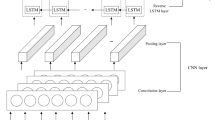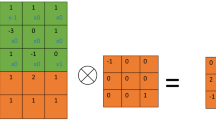Abstract
The application of recurrent neural network (RNN) is studied in athletes' sports achievement prediction under the internet of things (IoT) environment. Concretely, the 3000 m steeplechase and athletes’ corresponding achievements are analyzed using RNN. Then, the athletes' achievement prediction model for 3000 m steeplechase is established through different algorithms, in which the IoT technology is used for prediction analysis of the relationship between athletes’ physical parameters and achievement. The experimental analysis finds that when the athletes' morning pulse is relatively stable, the achievement is better, while when the athletes' morning pulse fluctuates greatly, the achievement is not ideal. Meanwhile, when the athletes' oxyhemoglobin saturation is high, they will achieve better results, while when oxyhemoglobin saturation decreases, athletes' performance will decline significantly. Moreover, when the athletes' oxyhemoglobin saturation increases gradually, the athletes' performance will also be improved. At the same time, when athletes' blood pressure is abnormal, the training methods and training status should be adjusted reasonably, and the rest and training time should be rearranged to avoid long-term high-intensity training. There is no significant correlation between athletes' achievement and weight, but life experience tells that people with normal weight may have a better physical condition. Finally, under comparative analysis, the long short-term memory neural network prediction model can more accurately predict the achievement of athletes of 3000 m steeplechase. The results provide important theoretical support for the training plan of athletes, and an effective scheme for the prediction of 3000 m steeplechase achievements of athletes.







Similar content being viewed by others
References
Richard P, Billaut F (2019) Effects of inspiratory muscle warm-up on locomotor muscle oxygenation in elite speed skaters during 3000 m time trials. Eur J Appl Physiol 119(1):191–200
Kotarska K, Nowak L, Szarkeckardt M et al (2019) Selected healthy behaviors and quality of life in people who practice combat sports and martial arts. Int J Environ Res Public Health 16(5):875
Frome DK, Rychlik K, Fokas J et al (2019) Sports specialization is not associated with greater odds of the previous injury in elite male youth soccer players. Clin J Sports Med 29(5):368–373
Campo M, Champely S, Louvet B et al (2019) Group-based emotions: evidence for emotion-performance relationships in team sports. Res Q Exerc Sport 90(1):54–63
Hanley B, Bissas A, Merlino S et al (2020) Better water jump clearances were differentiated by longer landing distances in the 2017 IAAF World Championship 3000 m steeplechase finals. J Sports Sci 38(3):330–335
Kipp S, Taboga P, Kram R et al (2017) Ground reaction forces during steeplechase hurdling and water jumps. Sports Biomech 16(2):152–165
Slawinski J et al (2019) Effect of a 16-days altitude training camp on 3000-m steeplechase running energetics and biomechanics: a case study. Front Sports Act Living 1:63
Kui D, Liu X, Liang X et al (2016) Prediction model of sports performance based on grey BPNN. Int J u- e-Serv Sci Technol 9(8):87–96
Chen Y, Guo L, Zhang C (2020) Score prediction model based on neural network. Opt Mem Neural Netw 29(1):37–43
Liu W (2021) Beach sports image detection based on heterogeneous multi-processor and convolutional neural network. Microprocess Microsyst 82:103910
Guan S, Wang X (2021) Optimization analysis of football match prediction model based on neural network. Neural Comput Appl 3:2–3
Sweta S, Lal K (2017) Personalized adaptive learner model in e-learning system using FCM and fuzzy inference system. Int J Fuzzy Syst 19(4):1249–1260
Cui K, Jing X (2019) Research on prediction model of geotechnical parameters based on BPNN. Neural Comput Appl 31(12):8205–8215
Feng J, Sun Q, Li Z et al (2018) Backpropagation neural network-based reconstruction algorithm for diffuse optical tomography. J Biomed Opt 24(5):051407
Hou A, Jin S, Harmuth H et al (2019) Thermal and thermomechanical responses prediction of a steel ladle using a backpropagation artificial neural network combining multiple orthogonal arrays. Steel Res Int 90(7):1900116
Wang JW, Tsai SH, Li HX et al (2018) Spatially piecewise fuzzy control design for sampled-data exponential stabilization of semi-linear parabolic PDE systems. IEEE Trans Fuzzy Syst 26(5):2967–2980
Yuan R, Lv Y, Kong Q et al (2019) Percussion-based bolt looseness monitoring using intrinsic multiscale entropy analysis and BPNN. Smart Mater Struct 28(12):125001
Wang D, Luo H, Grunder O et al (2017) Multi-step ahead electricity price forecasting using a hybrid model based on two-layer decomposition technique and BPNN optimized by firefly algorithm. Appl Energy 190:390–407
Goodrich JA, Ryan BJ, Byrnes WC (2017) Does arterial oxyhemoglobin saturation influence the hemoglobin mass-VO2Peak relationship in endurance athletes at moderate altitude?: 935 Board #114 May 31 2. Med Sci Sports Exerc 49:247
Chen X, Yang Y (2016) Effects of sports nutritional beverages containing glycerinum on the physical functions of bicyclists after physical activities. Acta Univ Cibiniensis Ser E Food Technol 20(2):85–94
Author information
Authors and Affiliations
Corresponding author
Additional information
Publisher's Note
Springer Nature remains neutral with regard to jurisdictional claims in published maps and institutional affiliations.
Rights and permissions
About this article
Cite this article
Hou, J., Tian, Z. Application of recurrent neural network in predicting athletes' sports achievement. J Supercomput 78, 5507–5525 (2022). https://doi.org/10.1007/s11227-021-04082-y
Accepted:
Published:
Issue Date:
DOI: https://doi.org/10.1007/s11227-021-04082-y




